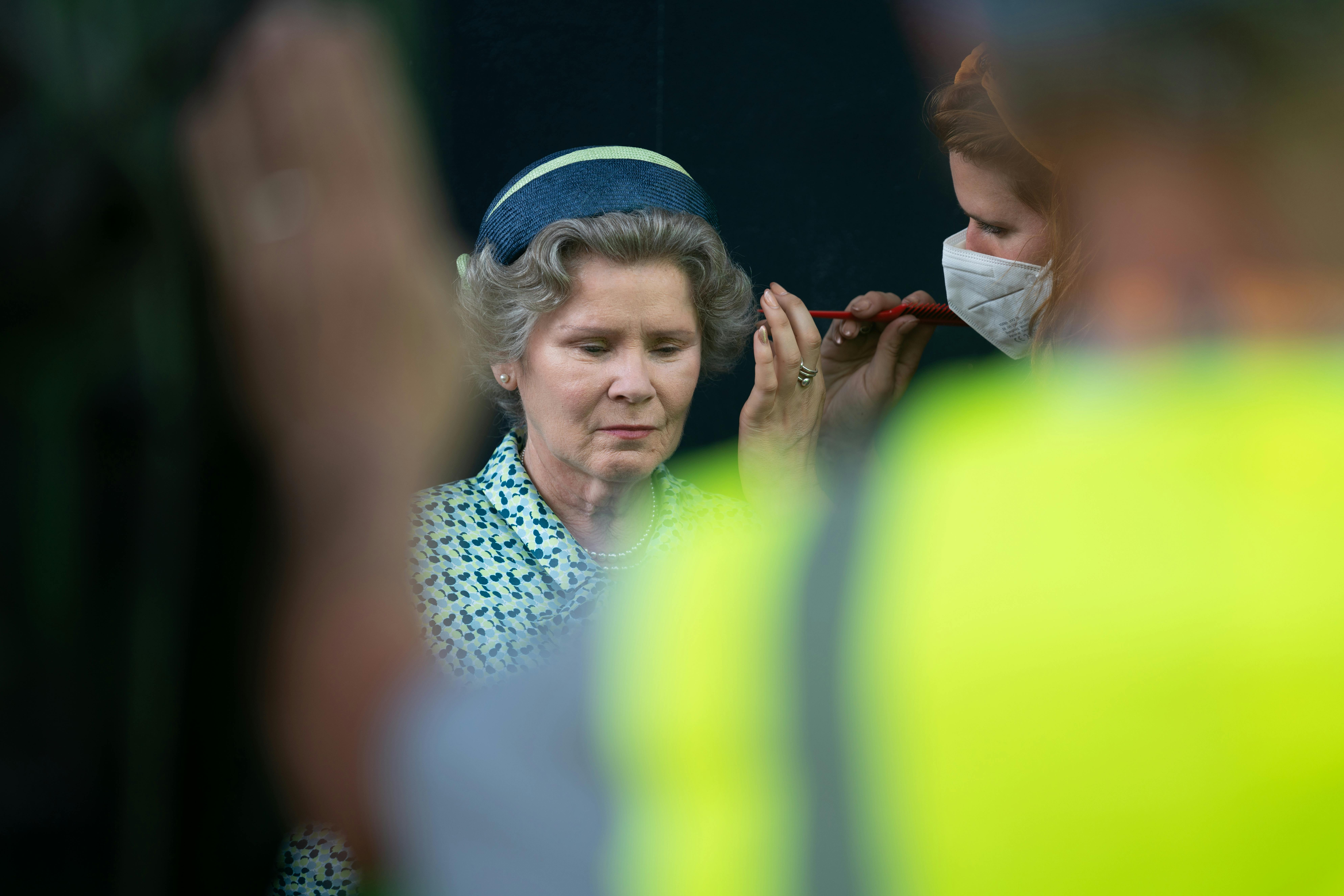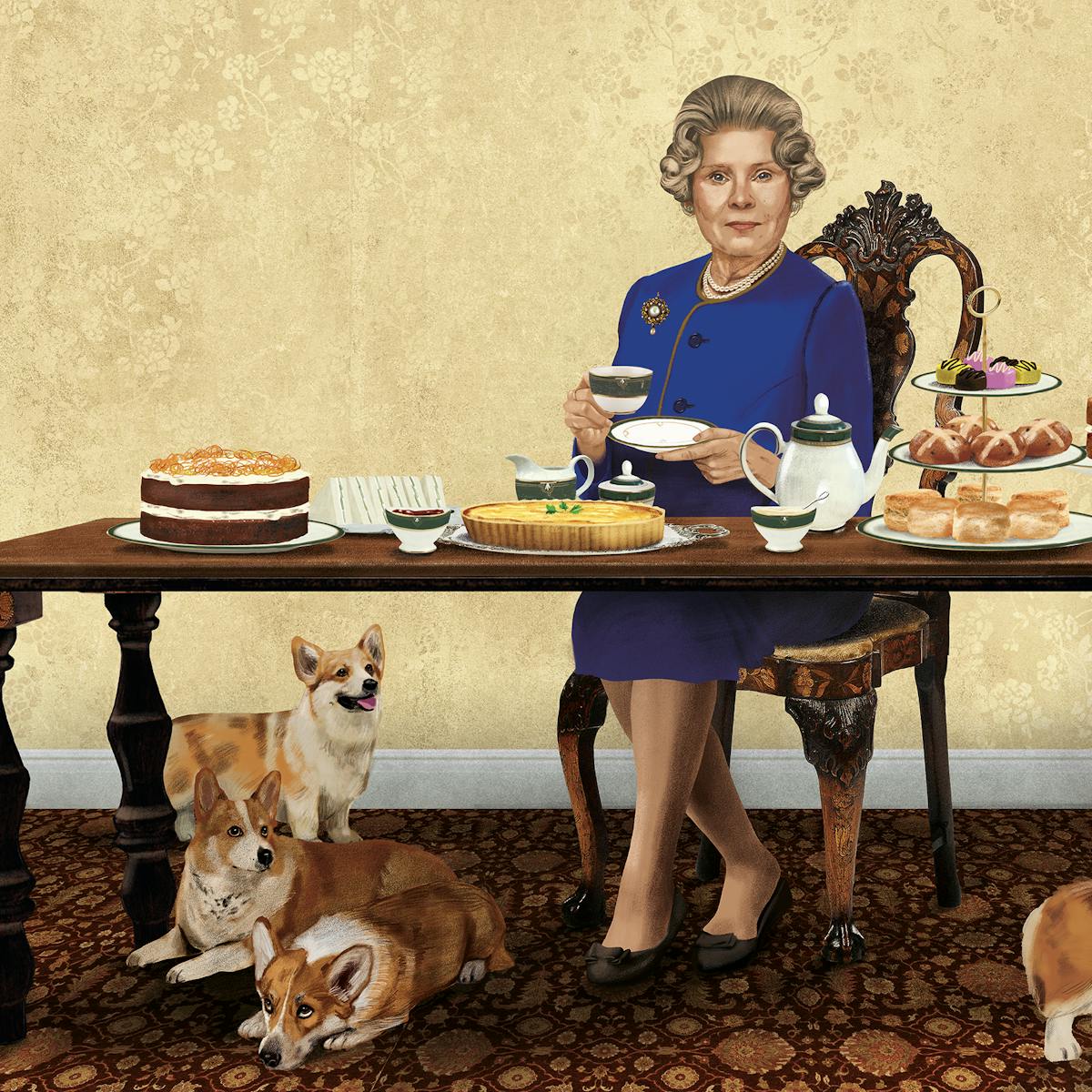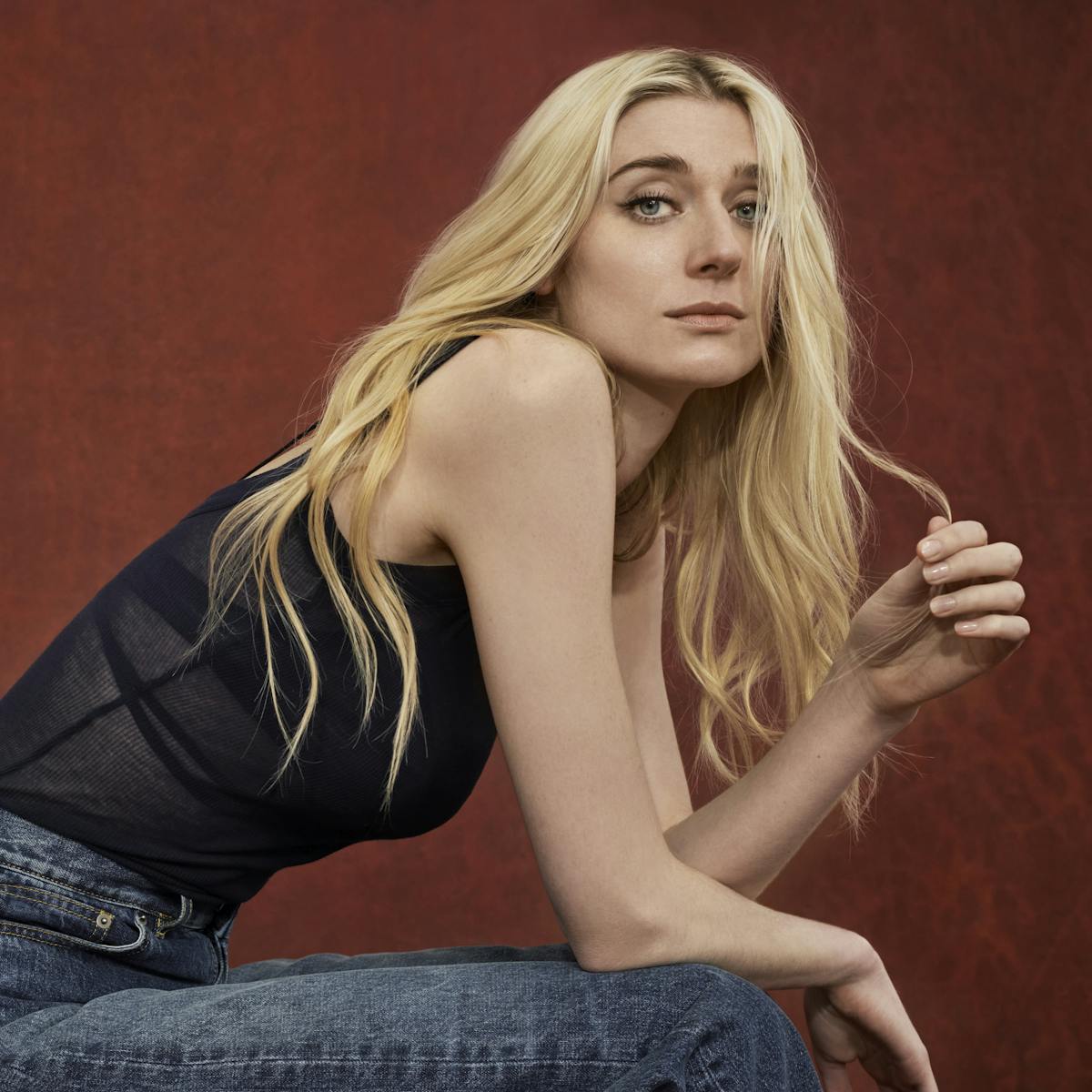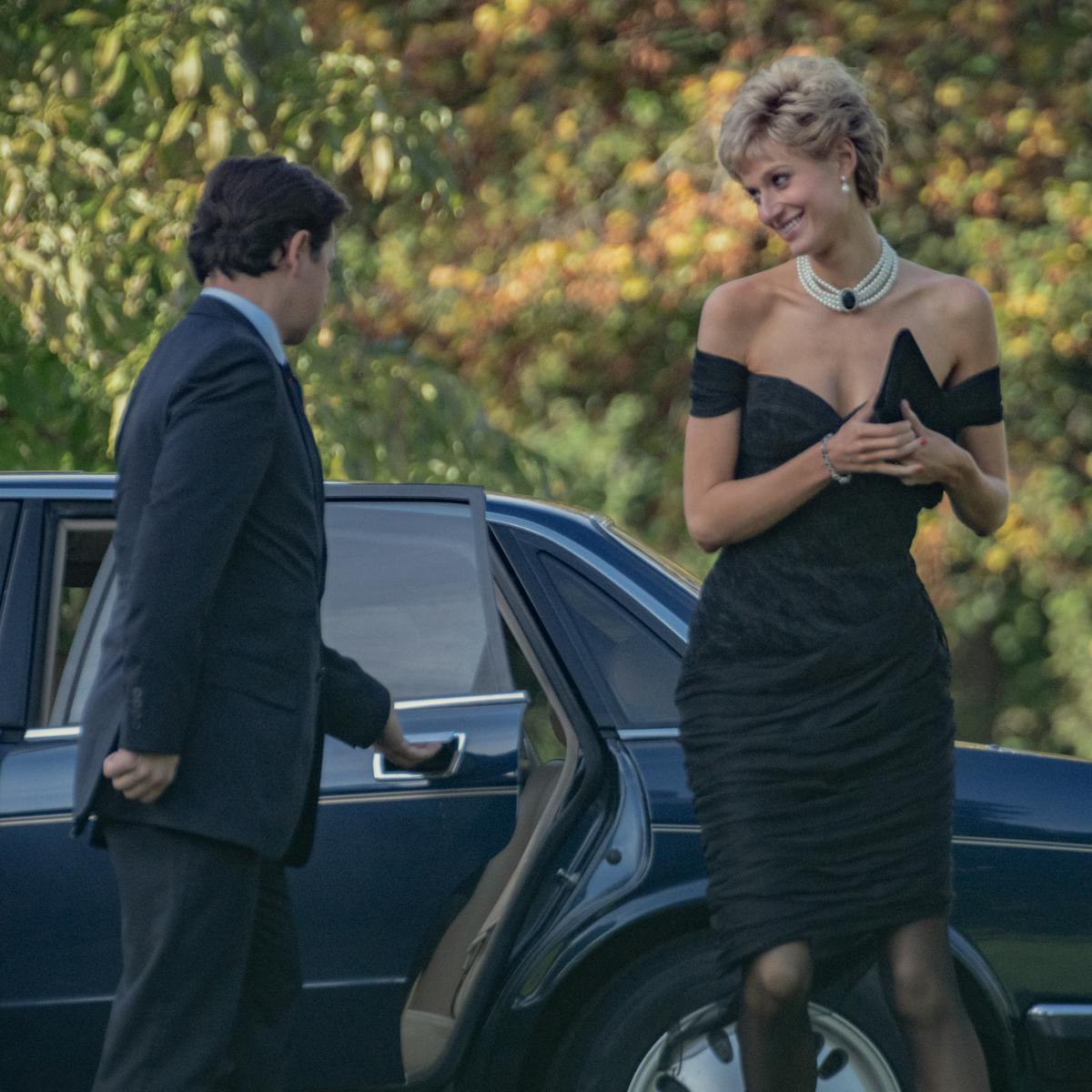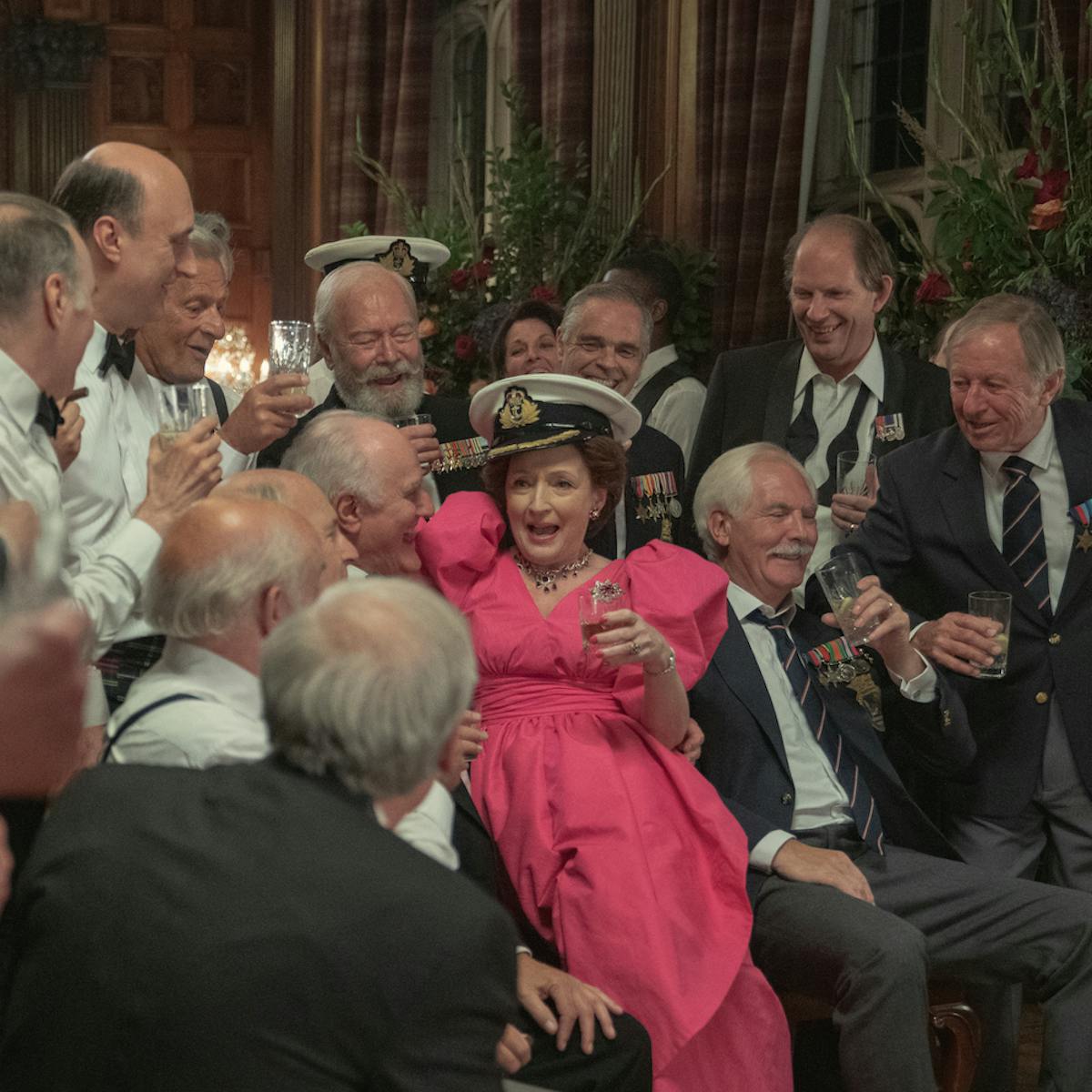The Crown’s fifth season gives 90s Buckingham Palace and its inhabitants the royal treatment.
Since its 2016 debut, Peter Morgan’s The Crown has maintained the highest level of craftsmanship, both on- and offscreen. Each chapter of the Emmy-winning prestige drama, which introduces a new cast every other season, features consistently spectacular below-the-line work and remarkable performances from some of today’s most renowned actors — this installment rings in the series’ final ensemble, which includes Imelda Staunton, Elizabeth Debicki, Lesley Manville, and Dominic West.
Covering the years 1991 to 1997, The Crown’s most recent chapter chronicles the good, the bad, and the ugly of a difficult decade for the royals. The period brings monumental challenges, with Britain’s increasingly disillusioned view of the throne as the season’s undercurrent of doom. The ten episodes cover a fire at Windsor Castle, a new prime minister, one powerful black dress, and two history-altering tell-all interviews. The queen’s beloved yet costly Royal Yacht Britannia serves as a throughline for the decline in the monarch’s relevance: The season opens with archival footage of the boat’s first sail and the final episode closes with its last trip on the water.
Turner Classic Movies on-air host Dave Karger spoke about the trials and tribulations of Season 5 with the latest cast: Staunton, who steps into the matriarch’s shoes, corgis at her heels; Manville, whose Princess Margaret nurses romantic regret; and West, as an emboldened Prince Charles. Taking on the role of Diana, Debicki masters the icon’s demure upward gaze and wounded yet resilient role in the highest-stakes season yet.
Joining the conversation were casting director Robert Sterne who has been tasked with recasting the drama; set decorator Alison Harvey; and hair and makeup designer Cate Hall — all of whom play a pivotal part in bringing The Crown to the screen.
An edited version of the conversation follows.
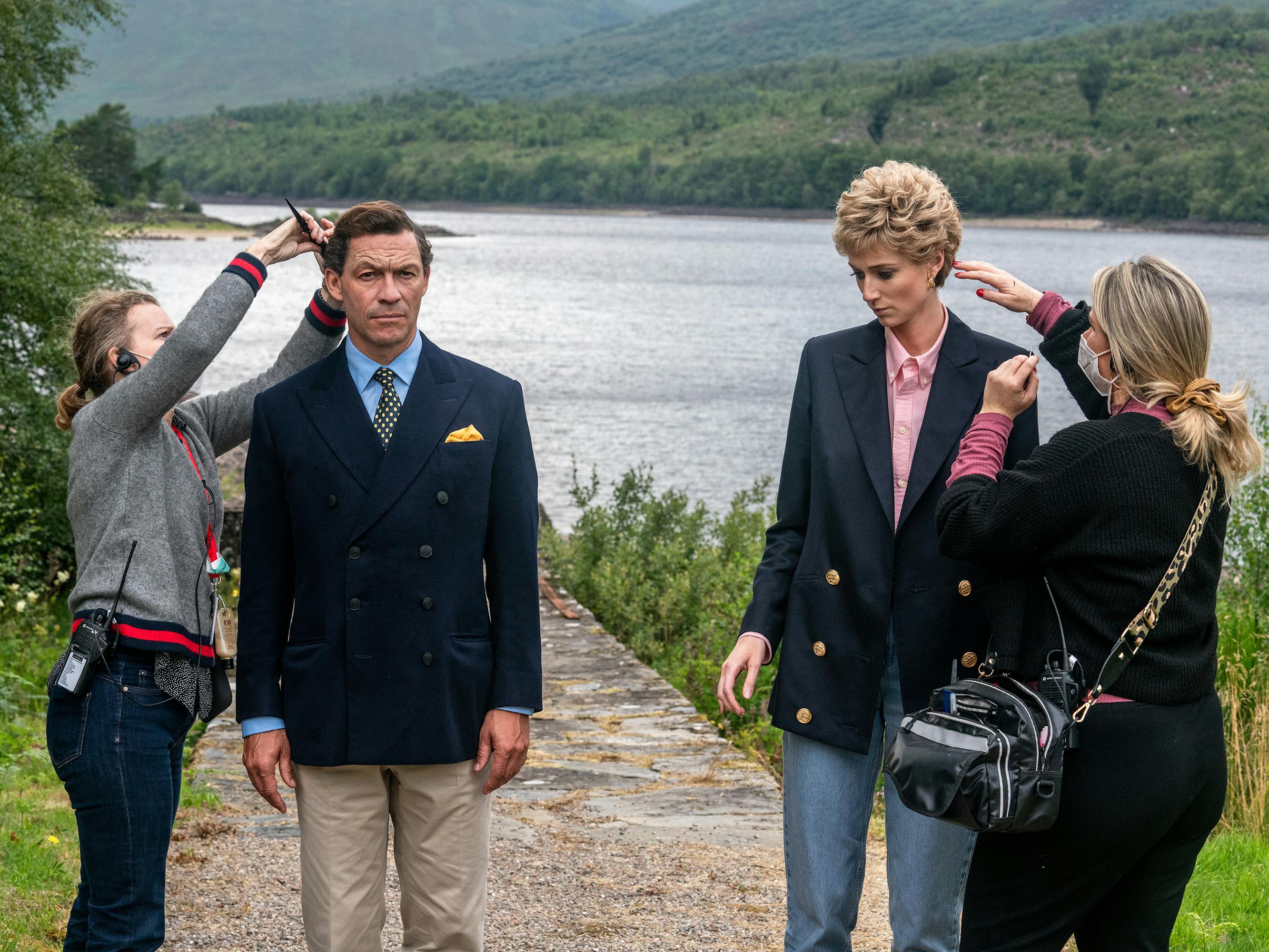
Dominic West and Elizabeth Debicki
Dave Karger: When you got this role, had you already watched The Crown?
Elizabeth Debicki: My dear friend Vanessa Kirby played Princess Margaret in Seasons 1 and 2, so that was why I started watching it, and I just thought it was some of the best TV that had ever been made. But I watched Season 4 with more of a sort of scalpel, a little bit more surgical.
Imelda Staunton: I had absolutely watched it and was so knocked out by Claire Foy [who originated the role of Queen Elizabeth], as we all were. Then having to take on [the role], I had to stop watching it. I just [followed] the scripts that Peter had written for us, but it was a wonderful thing to step into.
Lesley Manville: I’d been a massive fan, and when I knew I was going to play Margaret, I did go back and rewatch. Alongside the personal research of all the books and footage, it was very useful to see what Vanessa Kirby and Helena Bonham Carter were doing because ultimately, you’ve got to let the research do its job, and at the end of the day, we’re doing a drama.
Dominic, did you ever have a moment when you were watching the early seasons that you thought you could or might play Charles?
West: Oh, god, no. It’s the furthest thing I could ever think of being involved in. I was very surprised when Peter called me up. I was a big fan of the show and loved it as it came out. And then, when I got cast, I never looked at it again because I was too scared.
Robert, this is such an interesting job for you. You’re casting new characters [every other season], but you’re also casting people to play existing characters. How does that add to the challenge of your job?
Robert Sterne: Every two years you have to do everything again from scratch and put a whole load of new dynamics together. So it’s been a really brilliant challenge. When you’re doing it, you have to have a double vision because you’ve got a sense of who the characters are at that stage in their life, but you also want to think in terms of who’s played them before and their performance style and tone and how that’s going to feed into who’s coming next.
What are some qualities that actors who are playing the same role throughout the show have to share?
Sterne: There’s quite a lot of fun in getting people [with] a physical resemblance. If it’s not there at all, it’s not as fun for the audience. But really it’s about people making a connection with the writing, and you see [actors] lighting up as they make their connection with those characters at that time in their life. As complicated actors, you can do all the dimensions of these characters who, quite often, have been portrayed in the media in two-dimensional terms. What’s really brilliant about Peter’s writing is that he doesn’t write goodies or baddies, so there’s lots of room for the actors when they’re coming in there to make decisions about where they’re going with the characters and how they want to get ownership of it themselves, even though they’re taking a baton from whoever’s played it previously.
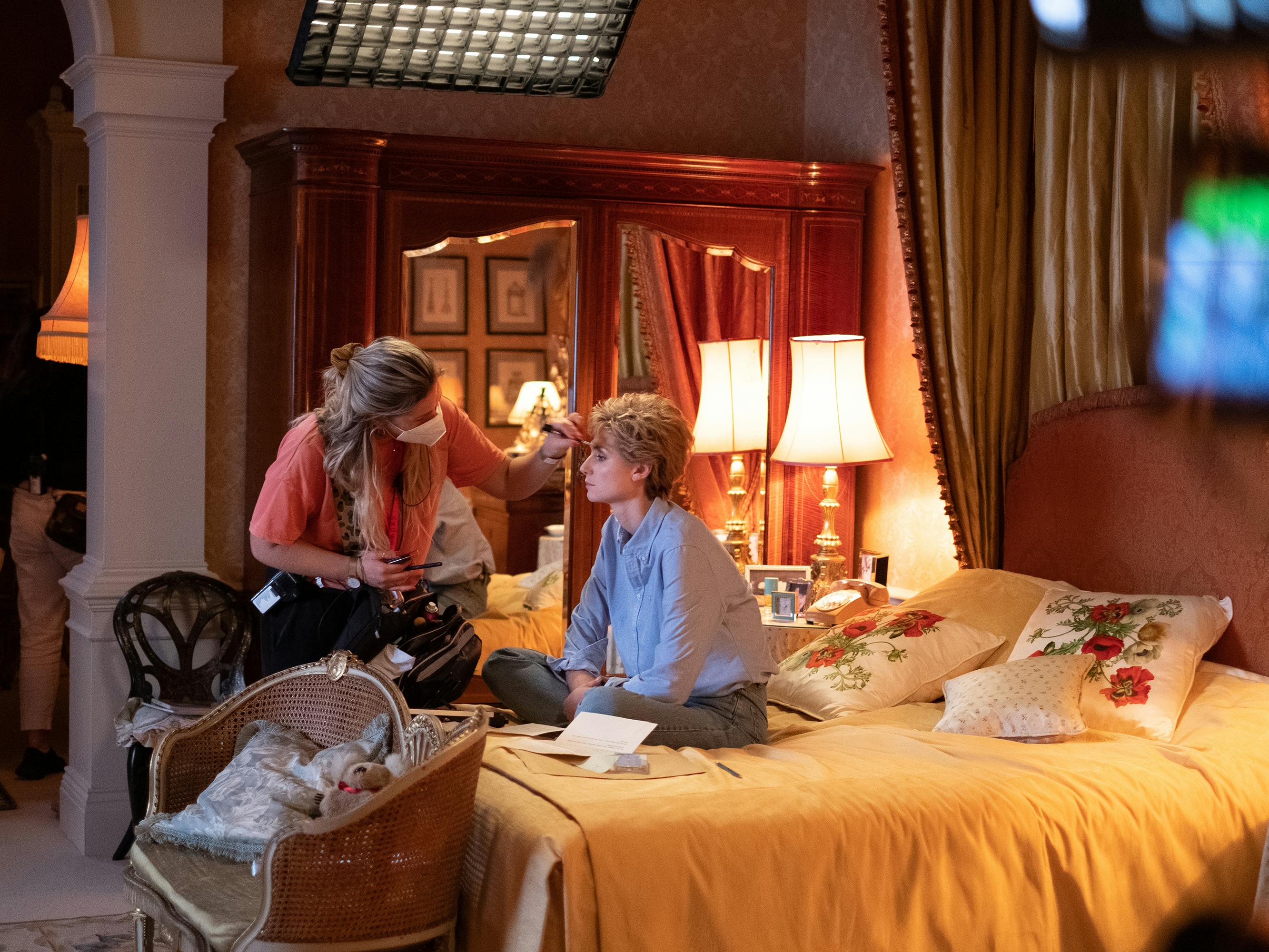
Elizabeth Debicki
Alison, when do you and your team find out what’s going to be on your plate for a particular season?
Alison Harvey: It starts with reading a script, and then identifying storywise which sets are going to feature most. Diana’s apartment was in almost every episode [in Season 5], so that was quite a big task to try and encapsulate that 90s feeling. I started with footage that Paul Burrell took of Kensington Palace, illegally, to start with that color palette of the lemons and tangerines and that very 80s and 90s flavor, and then just expanded on that, beautified it a bit, and made it feel like somewhere where someone lives. I had everything [in Diana’s apartment], from top to bottom, either made from scratch or sourced and bought. Because it had to stand for the whole season, it was worth investing that amount of time and effort into it.
Then you just jump into Russia or Egypt or Spain, all the other sorts of environments, and look at the research and try to create a world that supports the actors. It’s got to be very subtle. We did 400 sets over the season. The geographical spread is quite challenging to keep on top of, being in different countries at once. The Russian story was great because we were doing two parallel eras — the revolution plus the [Boris] Yeltsin story with the Queen — and how those interacted.
Cate, what was most important to get across to make sure that the look was just right?
Cate Hall: Our philosophy on The Crown is to leave space for the audience to do some work, to believe that they can take the character to the next level. So instead of using prosthetics and building up layers, what we tried to do is to get the silhouette. If an actor turns around and faces the other way, do they look like the person? With the Queen, you don’t get a more iconic silhouette. I think as soon as something looks kind of hokey, we’re really taking the audience away from the drama, so we worked really hard to make sure the wigs look like hair. We use bald pieces underneath the wigs. We [style] the roots so that they stick up and look like they’re growing. We use mohair to mimic fuzzy, baby hair. Dominic has the world’s tiniest wig just to extend his hairline to create this kind of square shape.
Elizabeth, so many people talk about the way you, as Diana, gaze. It’s just so spot-on. Was that something that unlocked this role for you?
Debicki: It’s a bit of a portal. We have a sense of how these people move through space and speak and sound, and it’s our job to make that satisfying for the audience. We do that with an amazing movement coach named Polly Bennett. I’d never worked with a movement coach before, and I adored it because the body is sort of like a roadmap: It contains all these secrets and mysteries and pieces of psychology. That was really integral to my process. The gaze thing — I thought, Okay, I need to do this, but I have to figure out why she’s doing this.
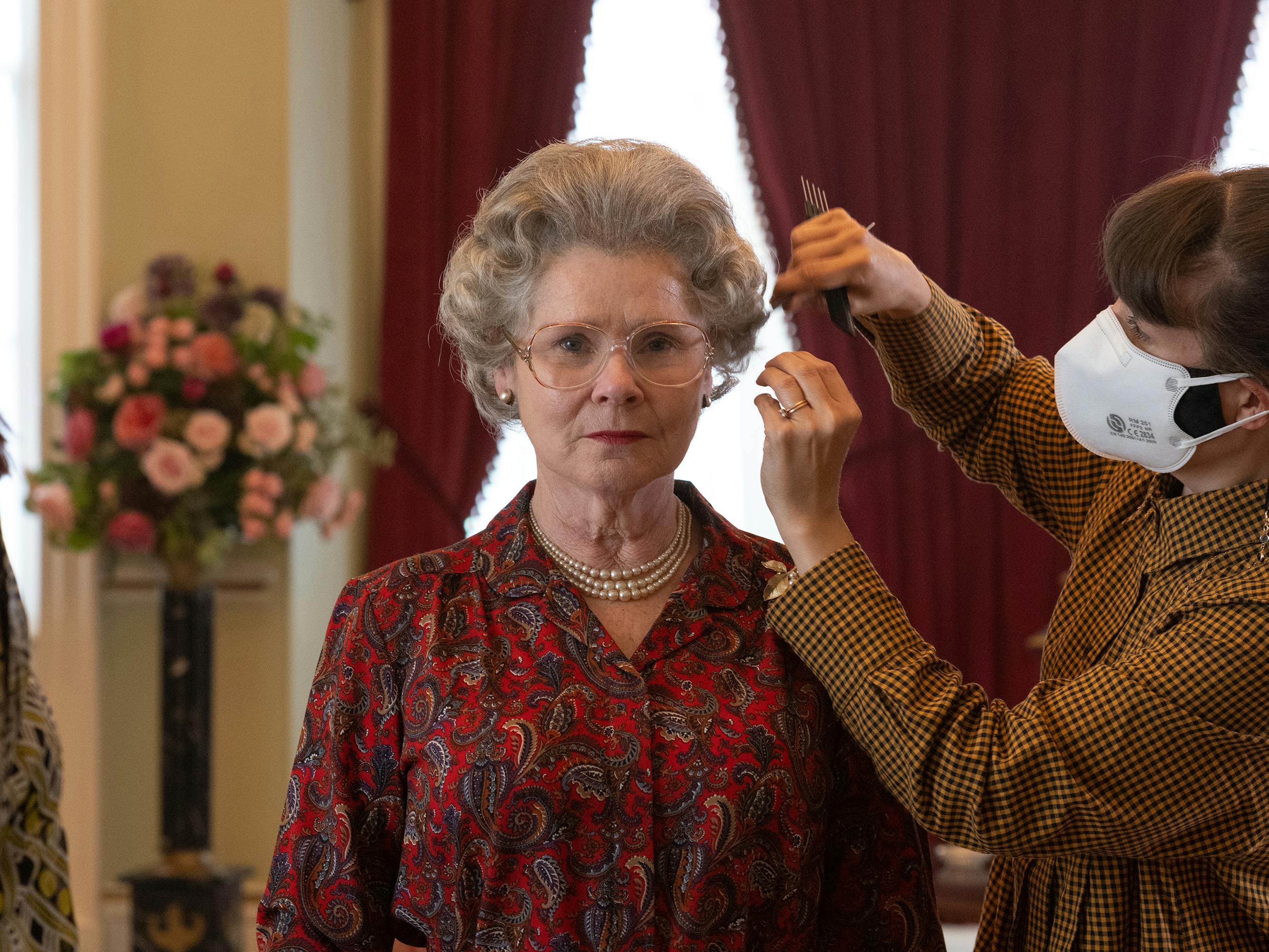
Imelda Staunton
Imelda, what was that scene like where Diana tells you, as Queen Elizabeth, that she’s given this interview?
Staunton: We loved doing that scene together because you’ve got, yet again, another great Peter Morgan scene. [Queen Elizabeth] doesn’t lose her cool. She doesn’t challenge. She doesn’t go off pissed. Through a lot of Elizabeth’s reign, I dare say there were many things she wanted to say and couldn’t say it. Elizabeth [Debicki] and I, we’re always saying we wish we had more scenes together but, of course, we can never stand in a room together, because we’d never get in a two-shot [with her being so much taller than I am].
Debicki: I think I did take my shoes off for that bit where you give me a kiss on the cheek.
Lesley, it’s such a thrill to see you performing with Timothy Dalton [who plays Margaret’s old flame Peter Townsend]. What was it like?
Manville: We can’t take an inch of credit away from Robert Sterne, but I had met Timothy a couple of times just socially, and when I knew that Peter Townsend was going to be a character in Episode 4, [Dalton] just sprang to mind because he’s the right age and he’s a very dashing looking man. That was my two pennies worth, but the rest was down to Robert and everybody else.
We had some good times with Polly Bennett, learning to dance together. It’s a very beautiful episode about this relationship, at least forty years down the line, and just meeting an old love, how tender and how sweet that is, and the memories of what they had and didn’t have. It highlights her loneliness and how she’s never found that sort of deep contentment.
When Diana’s TV interview airs, the reactions are fascinating. I’d be curious to know, Dominic, what you and Olivia Williams, playing Camilla, were reacting to because it’s so realistic.
West: I had Elizabeth’s performance, which obviously helps. We did dozens of different reactions, and I think Peter had written that I throw a glass across the room, and then I shout and swear. We went from sort of 10 to about 4. The trouble with Charles is you know that he is an emotional man, but you’ve never seen it, really, in public. I suppose the whole point of The Crown is that you see the private lives of these public personae. You never really know what they’d do in public or even how they sound when they are anguished or deeply emotional, so we tried everything.
Manville: My memory is not having the footage, but that could be because maybe it wasn’t shot by the time they were on me. There was somebody reading through the narrative of it, which was enough. I mean the words are so potent; what Diana was saying was just so shocking. Margaret had a complex relationship with Diana: She thought she was great, and she saw the baton of the whole press attention that Margaret once had and that now Diana was having. She sort of saw a kindred spirit. But as the relationship went on, she got more and more and more disgruntled with [Diana’s] behavior and was very judgmental about how she was conducting her life. So by the time that interview came out, I think Margaret was very disdainful — I remember just being very clear about what Margaret’s reaction to seeing that would be.
Elizabeth, how much was the actual interview footage an obsession for you? Or did you just say, “I’ve got to turn this off,” and do it as felt natural?
Debicki: That was one piece that I did allow myself to obsess over. I also found it to be a quite deep well to swim around in, and it’s the most research I’ve ever done as an actor. I probably watched it for about nine months, not every day. I found Peter’s choice to base so much of the story around this interview, after what we learn about how it had come to light, very interesting. I felt that it was my responsibility as an actor to both make a representation of it that was authentic, but also use it to help tell that story of how manipulated she was at that point. I would listen to it a lot while I was cooking. I would watch it in the car, and then I just sort of did it one day, and that was a very nice release to have it out of my mind.
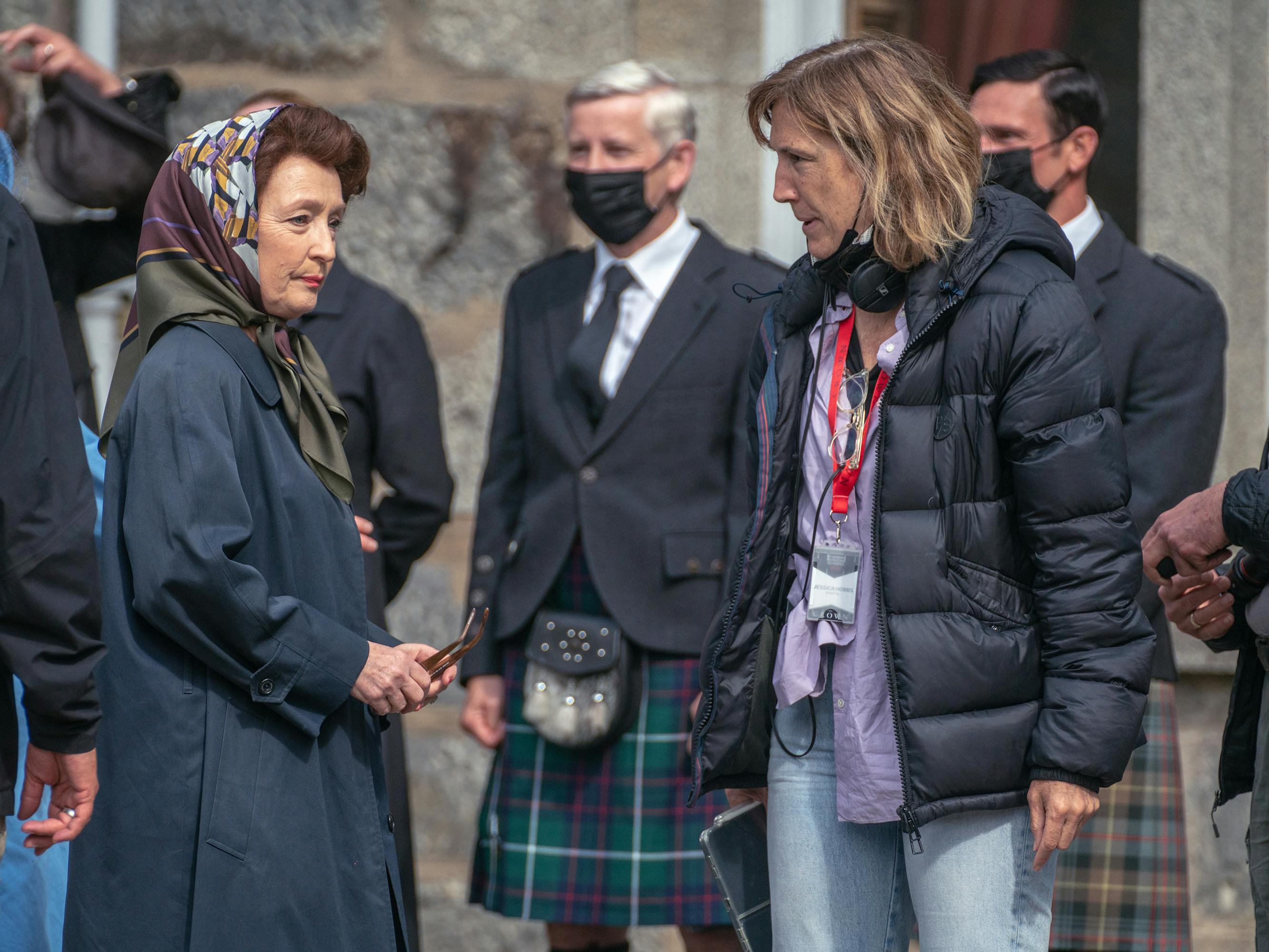
Lesley Manville
Robert, is this the dream job for a casting director?
Sterne: Oh, totally. You’re so thrilled when the people who you and Peter ask to come onboard say yeah. I suppose it’s an incredibly daunting job in some ways, too, because there’s the responsibility of playing these real people that is taken very seriously. There’s an amazing research team that we all have access to that can give you so much information about each of these individuals at the very point in their life when we’re dealing with them.
Cate, how much time is there between you meeting Imelda and when she’s in front of a camera and needing to look right?
Hall: Quite unusually, I met Imelda in February, and we didn’t camera test until June. We have this very archaic method where you wrap her head in cellophane and then draw on it with a marker pen, and that’s the start of the wig process. Then you choose all the colors and the wonderful artisan wigmakers knot all the hairs individually and make these beautiful wigs. Then we really start our process a few months later and we hold each other’s hands a little bit through it. We’re all terrified of failure at that point, and we spend many hours gingerly chipping away at the wigs because, obviously, they’re expensive and the hair doesn’t grow back. Through that process of experimentation, I would say after maybe three or four fittings, you start to see the character emerge, and you both start to relax a little.
How much would you say you all thought about these characters and these roles during the time off?
Staunton: I’ve been thinking about the Queen since June 2019 every single day. I didn’t do any other jobs, because I didn’t want to have anything else in my head. It was such an extraordinary place to be with her — such a still and very concentrated place — and I just loved it.
Manville: I got Margaret on the go. She was there. She was in my bones. It gets in there and I had a long, long, long time before we started Season 5 to get my act together with her. I was doing some A.D.R. [automated dialogue replacement for Season 6] only yesterday, and I said to the recordist, “I think this is probably the last time I’m going to say some words of Margaret’s.” It’s a weird thing to say goodbye to her really, but she’ll be there out there with what we’ve all done with our characters forever.
West: I became obsessed with him and thought of him every day. And then, of course, so much has happened to Charles since. So it goes on, and I find it quite hard to let him go. He’s an endlessly fascinating character, and I think he has a sort of epic life, in a Greek tragedy way. I sort of fell in love with him, and I’ve never played a part where your focus of concentration is on the news every day.
Debicki: This is nice to hear that we’ve all been swimming in the same seas. I love this character deeply, and it doesn’t leave your mind. I tried to release it a little bit from my body in the break, to try and sleep a little bit and rest. But, it was almost like that sound that only dogs can hear. It was just prolonged and then, all of a sudden, we were back in front of a camera.
